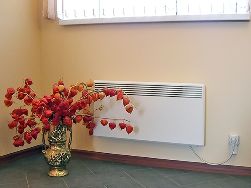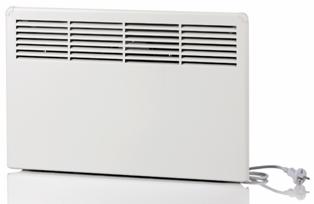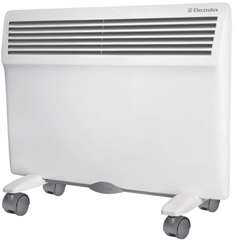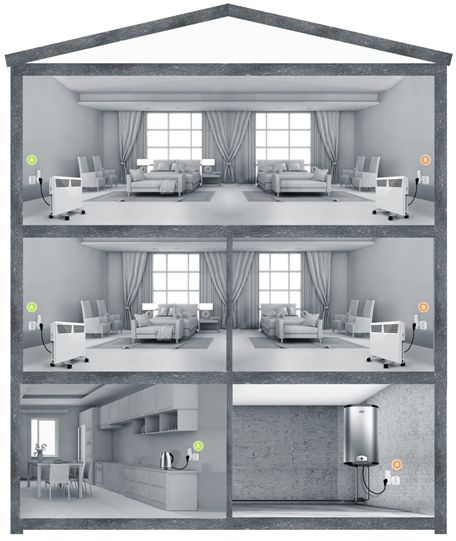Categories: Home automation, Energy saving
Number of views: 249992
Comments on the article: 18
The most economical electric home heating
 It is better to prepare a sled in the summer, as well as a heating system at home or in a summer house. It is not worth putting off “for later” the solution to this vitally important issue. After all, autumn cold can come suddenly, and it is important that the weather does not take you by surprise.
It is better to prepare a sled in the summer, as well as a heating system at home or in a summer house. It is not worth putting off “for later” the solution to this vitally important issue. After all, autumn cold can come suddenly, and it is important that the weather does not take you by surprise.
Homeowners who have gas connected to the house but who have no problems with heating and hot water can close this article and go about their business. This article is for people who want to do in the house. the most economical electric heating, but the power allocated to their house (the limit of allowed power) is not enough to connect several heating appliances and other household appliances. And the purchase of additional electric power from power engineers is not possible due to the unjustifiably high cost or physical absence of excess power due to old transformer substations.
What is the most economical and inexpensive heating system for electricity?
According to many years of experience, we can say that the simplest and cheapest way to implement a method of electric heating of a country house or cottage is use of electric convectors. These electrical appliances have positively proven themselves for heating, both residential and administrative or retail space. This type of electric heating has several important advantages over other electric heating systems and appliances. Consider just a few of the benefits.
1. The best indicators of efficiency and profitability
The principle of operation of an electric convector is the natural circulation of air, when warm air, as less dense, rises above the cold. Indoor air mixes spontaneously. This ensures good uniformity and speed of heating, as well as the absence of drafts.
The heating elements of electric convectors have a low mass and thermal inertia, so they heat up quickly. Unlike, say, oil filled radiators. Therefore, the efficiency of such a heating device is very high, and the power consumption is an order of magnitude less than that consumed by an electric boiler.
Almost all the electricity consumed by the convector is converted to heat. A thermostat allows you to achieve significant energy savings, because TEN does not work constantly, but only with a decrease in air temperature. Those. cyclically.

2. Best performance safety
Modern convectors contain TENYthat do not heat above 100 ° C. At the same time, the temperature of the convector body remains below 60 ° C. The convector does not burn oxygen. And most devices of this type have increased protection against moisture (IP24), so they can be safely installed in bathrooms, bathrooms, dressing rooms, next to the pool, etc. Although, of course, this does not mean that the convector can be sprayed with water from a hose!
Convectors from leading manufacturers are equipped with a security system that will turn off heating if the air inlet or outlet is closed. Therefore, convectors can be used in kindergartens, nurseries, hospitals, etc.
3. Easy to install and operate
The electric heating convector is ready for use immediately after purchase. All that is necessary for its operation is installation on a wall or on special legs, as well as inclusion in the power grid.
To select the temperature, it is enough to set the thermostat to the appropriate temperature value, and then, just wipe the dust from the case. Unlike the installation of a water system, convectors save considerable money because they do not require laying pipes around the house.
4. Low price
The cost of high-quality electric convectors can not be compared with the cost of an electric water heating system.
5. The possibility of a gradual increase in the system
Convectors can be purchased and put into operation gradually, as necessary or as funds are available. While water heating requires the purchase of all components at once, which is not cheap.
6. The possibility of using energy-saving automation
Very often, the power allocated to a house or cottage is not enough to connect several energy-intensive heating devices. Electric convectors allow the use of additional external automation, for example, the OEL-820 Clusterwin network load optimizer, which reduces the total power consumption and allows you to operate them even with an insufficient limit of allowed power.
This is very important for a country house. In addition, the load optimizer does not require installation, but simply plugs into the outlet, like an adapter - adapter. Electric boiler It requires a large supplied power, which cannot be reduced.
7. Insensitivity to voltage deviations
Heating elements of convectors are not sensitive to the deviation of the network voltage, which is often found outside the city. Therefore, they do not need an additional voltage regulator.

8. Great design and compact
Heating with convectors does not require room under the boiler room. Convectors are small and fit into any interior.
See more about here arrangement of electric convectors.
Clause 6 is illustrated by an example
Under an agreement with a power sales company, the electric power allocated to the house is 5 kW. At the same time, it is necessary to operate four convectors of 1 kW each, a water heater of 1 kW, and a kettle of 1 kW. In total, our electrical appliances consume 6 kW, which exceeds the allocated limit. Therefore, when they are turned on simultaneously, the network will overload and knock out the machine (circuit breaker) ...
However, it is not necessary that all appliances are turned on for heating at the same time. If powerful electrical appliances are conventionally divided into pairs and made so that in each pair one and only one electrical appliance can be turned on, then it is possible to significantly reduce the total power consumption and bypass the allowed power limit. For these purposes, they use the latest automation - power load optimizers. For instance, OEL-820 CLUSTERWIN.
You can read more about this device and its operation. in previous articles.
To connect energy-consuming electrical appliances, we will use three optimizers for the load on the electric network OEL-820 CLUSTERWIN.

Third floor. One large room is a studio.
When the priority convector A is turned on in heating mode, the non-priority convector B is turned off. As soon as the temperature in the left zone of the room reaches the set value, convector A will turn off the heating. The duty cycle of non-priority appliance B.
When the temperature in the right zone of the room reaches the set value, convector B will turn off. For some time, depending on the quality of the thermal insulation of the room, both convectors can be turned off. At this time, the temperature in the left area of the room slowly decreases.
When the temperature drops below the set value, priority convector A will turn on and begin its new duty cycle.
Since in this pair of convectors only one convector can turn on at any moment of time, the total power consumed by the two convectors will never exceed 1 kW.
The total consumption and load on the power grid is reduced by 2 times.
Second floor. Two separate rooms.
Convectors of the second floor, connected to the network through optimizers of the load on the mains, work in exactly the same way as convectors on the third floor. Only each of them heats his room. At the same time, the total power consumed by two convectors will never exceed 1 kW.
Ground floor.
The kettle and water heater are connected to the network through the OEL-820 optimizer. While the kettle is not in use, the water heater operates in accordance with the temperature set on the thermostat. When you turn on the kettle, the water heater automatically turns off for the duration of the kettle.
As soon as the water boils, and the kettle turns off, the water heater will be connected to the network and continue to work. It is preferable if the thermostat is electromechanical. Such a water heater is cheaper.
Since one and only one electric device can be switched on from two electrical appliances, the total power consumption of the kettle and water heater will never exceed 1 kW. Therefore, their consumption and load on the power grid reduced by 2 times!
Conclusion: when operating six electrical appliances with a total capacity of 6 kW connected through three optimizers of the load on the power grid, the total power consumed from the power grid will never exceed 3 kW!
Which of the points of advantages of convectors listed by us should be put in the first place, and which in the last? There is no definite answer to this question. But, the ability to choose what is more important in your specific situation is already wonderful!
Which electric convectors to choose?
This is a matter of taste and purse. It is clear that you should only buy devices from well-known manufacturers, such as NOBO or the like. This is your safety. Pay attention to a function such as self-healing (restart) after a power outage.
Normal convectors are not sensitive to power outages. And those that require a restart by a person are not convenient in operation and can cause great damage by freezing a house.
Yuri Shurchkov
See also at e.imadeself.com
:
